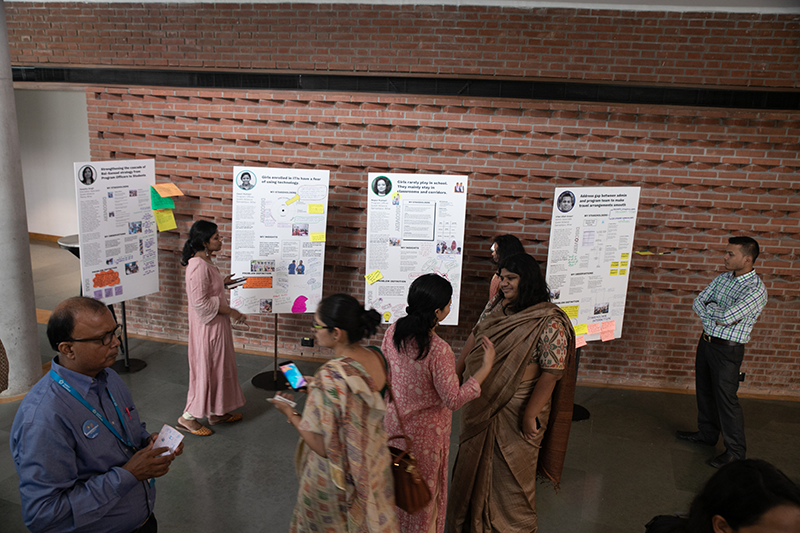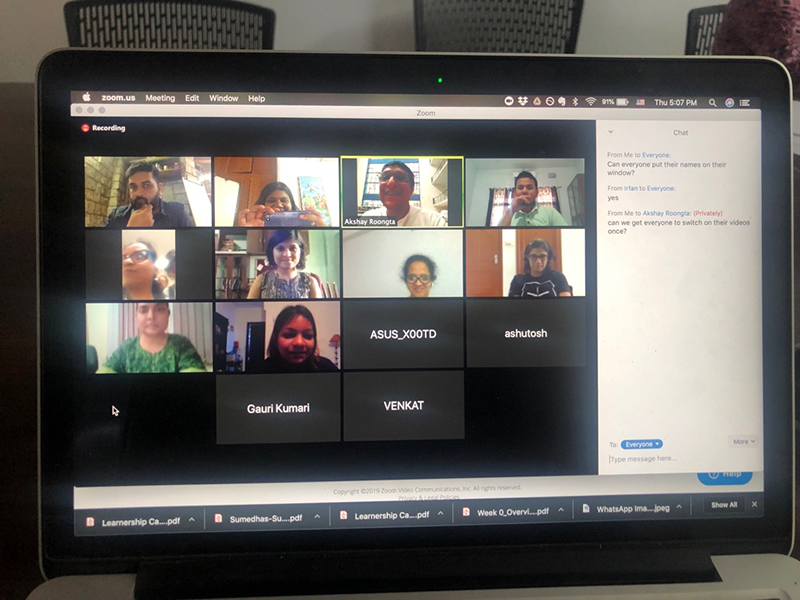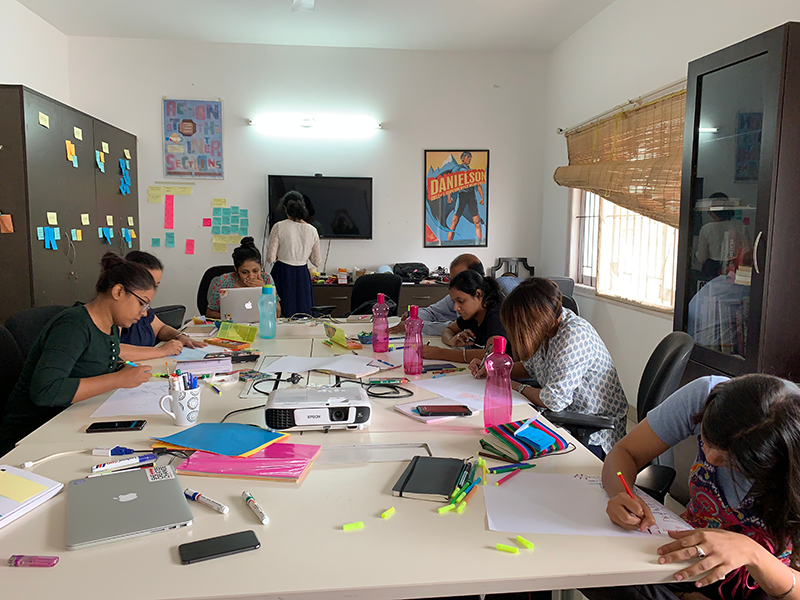Quest Alliance: Thinking through innovation at Quest and piloting a course for employees
Context
Quest Alliance is a not-for-profit trust that equips young people with 21st century skills by enabling self-learning. Quest designs scalable solutions — products, services and systems that enable learners and teachers to ensure quality education towards better employability.
With the imminent shift and evolution in Quest’s organizational structure, there was a need to develop a process to uncover, incubate, develop and eventually implement innovations that can have far reaching impact in the sector and around Quest’s theory of change. The idea was to develop a process by which individuals and groups in the Quest ecosystem could imbibe an innovation centric thought process alongside empowering them with tools and frameworks to develop and document these innovative solutions. The process looked to train interested individuals in how Quest sees innovation, the tools to identify and develop these solutions, and then the support to take them from nascent idea to solution on the ground and possibly to scale beyond Quest’s immediate ecosystem.

The Objective
The objective of this project was to:
1// Develop a process by which individuals and groups in the Quest ecosystem, both internal and external, could get to know the process of Design Thinking and imbibe an innovation centric thought process.
2// Lay the foundation for building a culture of innovation in the organisation.
What we Did
We worked on this idea in 2 phases. The first phase concentrated on designing a workable system with various touchpoints that would help participants understand the tools and processes of Design Thinking. In the second phase, we piloted this system, concentrating on implementation and iteration of the system we designed in the first phase.
Phase I
In the first phase of the project (Nov 2018 - Jan 2019), we worked with the Quest team to create the structure, courseware and touchpoints for a program spanning the months of March until July. The program had three main components:
1. Defining the Big Picture
We came into the process after about 6 months of work had been done by an internal team that tried to uncover what innovation meant and had begun defining a framework for the larger goal of Quest helping employees and ecosystem partners and stakeholders bring in an innovation mindset into their work.
The fist month or so was spent by us interviewing Quest employees across programs and locations in India. We then worked with the team at Quest to sharpen the big picture around what would be needed to get to the vision. Following from that, we narrowed our focus to design a pilot blended learning course, 'The Learnership', that would work with a small cohort of Quest employees, and a couple of ecosystem partners. The idea was to have this pilot open to all levels and teams across the organisation, with a special focus on program officers.
2. Designing and Setting up the Learnership Program
The program was designed to take the participants through all the stages of 'Design Thinking' through varied touchpoints like a Learning Management System (LMS), periodic webinars, and structured peer activities. They would start with an identified need/gap, define the problem better through a research exercise, to idea generation using individual and group ideation methods, to experiment on a selected idea, and then pitch the idea to peers and a panel. Each of these were made into modules which explained the concept with various examples and activities that the participants could do. Each module also aimed at helping the participant understand a concept, use it in their life and reflect on it.
Creating the right scaffolding through touchpoints was critical to run a program like this. There would be a facilitator who would work closely (especially in the pilot), to support the participants through one on one mentor calls, check ins, and managing community interactions through a communication channel such as WhatsApp.
Towards the end of this phase, we ran workshops at Quest's annual retreat with the whole organisation to introduce them to the idea of the Learnership program, and to solicit interest. We then shared a form by which employees of Quest could self-nominate for the pilot cohort after discussions with their supervisors and team leads.

Phase II
The second phase of the project, focused primarily on the execution and iteration of the designed Program. Initially we focused on iterating the content that was designed in Phase 1 based on the feedback we got from the participants and from observing the process. We iterated and designed strategy for implementation of the program in the future, increasing its scope and scale. Apart from designing and iterating these aspects, we supported the implementation of the course for the first cohort of participants by helping in setting up channels for content dissemination, communication and by giving one-on-one support and mentorship to the participants.
1. Design of Content
The design aspects included:
- Courseware and Content Iteration: While going through the program, we iterated the courseware as well as other touchpoint content based on feedback from the participants and our own observations. Refining content so that it might be adaptable in the future for use in other programs.
- Strategy and Touchpoints Creation: Based on the reception of the program, (and peer activities), we built out a clearer strategy for touchpoints for wider learning and running of innovation tools, techniques and processes across the organization and ecosystem, for the coming years, which would help Quest begin to build out the envisioned innovation ecosystem.
- Incubation Strategy Creation: Working with the Quest team to define the future of the program and resource requirements for it, as well as for the incubation of selected projects and individuals based on our observations and research.
- Planning for scale: The program was mainly focused on internal team/stakeholders. In the future, it may be delivered to external stakeholders in different formats. Working with the current cohort which had 1 participant from partner organizations, we collected insights related to the program structure, scale, the format of the course for an external audience as well as to understand ideal persona for the external audience. We worked in parallel with the program, building and iterating course content, concrete strategies for the program going ahead as well as put in effort to create certain tools and platforms.
2. Implementation
Implementation of the program required providing active support to the cohort of participants, setting up tools and platforms for the program and working towards the larger goal of creating an innovation culture in the organization. Broadly the activities included the following:
- Setting-up channels: Ensuring content is set up on the LMS. Setting up and Managing the communication channel. A big part of running the channels was making sure the participants were engaged. For this we designed some engagement and warm up activities, while encouraging them to share their thoughts and feelings on the group throughout.
- One-on-one mentorship: During the program, we mentored some of the participants to provide direct support and to anchor the lessons learnt by them on LMS and on the field. We got on calls with each participant and explained the concepts, discussed their ideas and gave them feedback. From the participants we too got feedback about different aspects of the course.
- Webinar Facilitation: We helped set up and facilitate the periodic webinars along with the Quest team. In the webinars, we did warm up activities, invited subject matter experts to help participants get different perspectives, conducted activities that encouraged the participants to communicate among themselves. We iterated the format of the webinar based on the observed engagement and feedback.
- Support for Pitches at Quest to Learn: We worked with participants through the program to have their projects culminate in pitches at a meetup. This included documentation of the process and their thought process at different stages in different formats.

Outcomes
At the end of these phases, we were able to give to the organisation recommendations for the short and long term of innovation at Quest. The short term included the current program design, status of each participant who engaged with the program, insights and learnings from our experience of running the program as well as actionables and takeaways towards the next cohort. Along with this, we made some recommendations on how to fit this program into the big picture of innovation at Quest.
For the big picture, we built a roadmap for the next year, breaking down the process over time and touchpoints. Into this, we incorporated our learnings and insights pulling from experiences over the last couple of years of work with Quest and this project in particular.
This has culminated in Quest putting together a small team internally that is continuing to support learners, and plans are on to strengthen touchpoints such as running webinars, 'ideathons', support for prototyping, with an eye at running more cohorts in the latter half of 2020.
